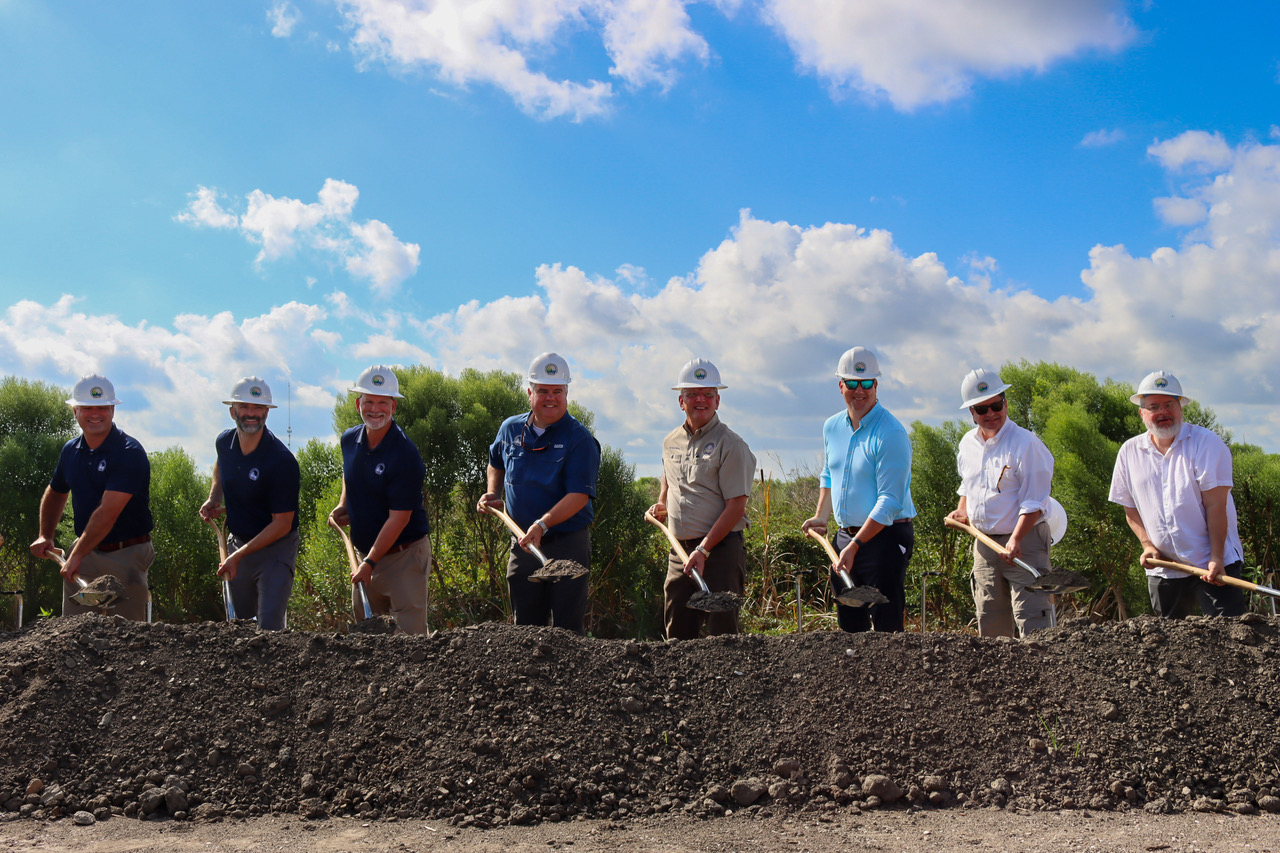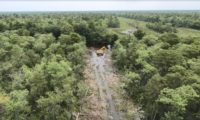When measuring the impact of land loss plaguing the state of Louisiana, the staggering statistics verify the significance and need for coastal restoration. With over 2,000 acres lost since the 1980s, peril was traded for progress with the Louisiana Coastal Protection and Restoration Authority (CPRA) breaking ground in late summer on its $2.3-billion Mid-Barataria Sediment Diversion (MBSD) project.
The MBSD coastal restoration endeavor is located at mile 60.7 on the Mississippi River between Ironton, La., and the now-closed Phillips 66 Alliance Refinery. Its boundaries span the Mississippi River's west bank to the Mid-Barataria Basin, west of what is referred to as the back levee. The project focuses on capturing rich sediment and freshwater from the river and then diverting it to the Barataria Basin. The MBSD is a joint venture between Archer Western and Alberichi.

Governor John Bel Edwards (centered) and officials of Louisiana’s Coastal Protection and Restoration Authority participate in the Mid-Barataria Sediment Diversion groundbreaking.
Image courtesy Mid-Barataria Sediment Diversion
According to Brad Barth, CPRA project manager for the MBSD, before mankind interfered with natural river flow, sediment and river water were naturally carried to various areas, which are now closed off to the revitalization process. This was due to protecting low-lying regions and establishing a population, including New Orleans. The state's world-renowned levee system has contained the river to keep water out of unwanted areas and to ensure a navigable waterway to the Gulf of Mexico, but at a price.
“The river is no longer capable of spilling its banks,” said Barth.
Through a series of flood walls and guide walls, the MBSD will mechanically deliver what Mother Nature once did. While currently displaying the negative impact of saltwater intrusion, hydrologic alteration, sediment deprivation, subsidence and sea level rise, the MBSD is expected to recreate a riverine and estuarine collaboration resembling the previous natural process.
The diversionary project will rely on a controlled release of approximately 75,000 cubic feet per second of river water, sediments and nutrients entering through operable gates. Earth and concrete will be used to construct levees. When put into operation, Barth indicates that approximately 26,000 acres of new and sustainable land will be formed over 40 years. The new addition of land will play a critical role in hurricane protection and create a habitat for wildlife, such as waterfowl, while enhancing the fishing in the area. All components are crucial to the residents residing in the area, as well as those who come to visit and enjoy the state’s fishing and hunting offerings.
“It is a large mega project with funds coming from the Deepwater Horizon disaster and the Natural Resource Damage Assessment,” said Barth. “It is roughly a five-year project with a 2029 completion date.”
Many identify land loss as a detriment to the state and support the MBSD. The nonprofit group Coalition to Restore Coastal Louisiana (CRCL) published the report “Here Today and Gone Tomorrow" in 1989, which stated that sediment and freshwater capture from the Mississippi River could be utilized to retaliate against land loss.
“We are thrilled that construction on the Mid-Barataria Sediment Diversion is finally beginning," said Kimberly Reyher, the executive director of CRCL. “Since 1988, our organization has been stressing the urgency of building this project, so to be at this stage finally makes it clear that all the hard work has paid off. We are grateful to our supporters who have worked so hard over the years, as well as CPRA and to champions of this project, including the Restore the Mississippi River Delta campaign."
Barth added that a Mitigation Stewardship Plan has been established to levee support for up to six communities outside the levee system that could be impacted by flooding. Additionally, funds are being allocated to assist with any negative impacts on the oyster and shrimping industries, as well as to establish subsidies for fishermen in Plaquemines Parish, where the MBSD construction is underway.



Post a comment to this article
Report Abusive Comment